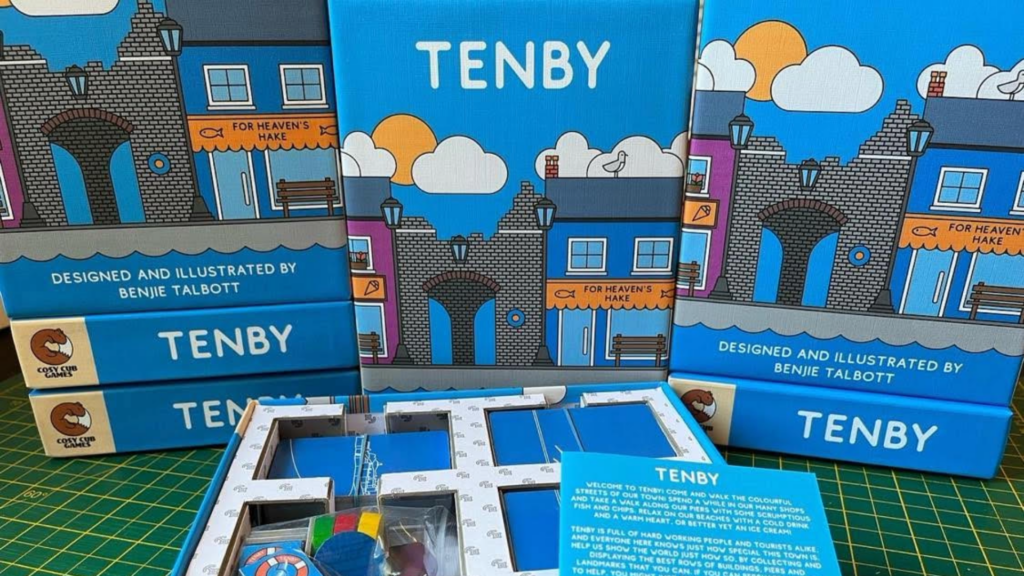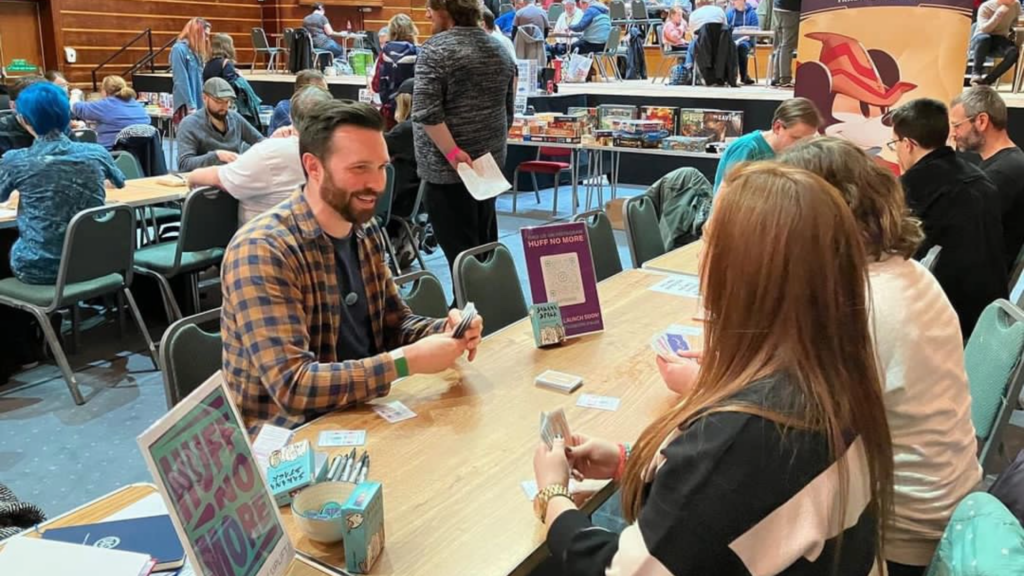As I sit down to reflect on the whirlwind of a year that was 2024, it’s hard not to be struck by how much has changed, evolved, and expanded both within myself and my experiences of the world of game design. This time last year, if someone had told me that by the end of 2024, my blog would feature over 40 posts and be recognised as the Best Board Game Media Newcomer by Cardboard Edison, I might have chuckled in disbelief. Yet, here we are, celebrating a year filled with dynamic discussions, meaningful connections, and invaluable lessons learned.
In the beginning…
The journey began on March 19, 2024. Initially, my writing was fuelled by the notion that a game design blogger’s job was primarily to generate followers—so write, post, repeat seemed to be the strategy. However, things quickly took a more engaging turn when I embraced the idea of conversations as a medium.
My first notable dialogue was with Carl Robinson, the designer of “Kelp.” Together, we delved into how tension plays a pivotal role in board games, not just as an ephemeral feeling but as a significant design element. This conversation marked a turning point for my blog and ignited a deeper curiosity within me about immersing players in their gaming experiences.
Conversations that sparked growth
One of the standout themes of this year was engaging with fellow game designers. These dialogues opened new avenues in understanding both the challenges and triumphs inherent in crafting games. I sat down with Benjie Talbot, who was on the cusp of launching his crowdfund project “Tenby,” a card game gloriously inspired by a Welsh town. Benjie’s insight about committing 100% to a single project resonated profoundly, casting a spotlight on my own hesitations and aspirations.

Similarly, my conversation with Mike from Huff No More, following our meet-up at AireCon, shed light on the nuances of playtesting. His success with “Sakana Stack” reiterated the importance of rigorous testing—an aspect Richard, aka The Indie Kid, further underscored in a later chat. Playtesting emerged as a recurrent and invaluable theme, illuminating the path from concept to creation.
Exploring new frontiers
Perhaps one of the boldest steps this year was diving into the burgeoning field of artificial intelligence in game design. The industry is aflame with debates: ethical considerations, potential impacts, and the ways in which AI can revolutionise the ideation process. My post gathering perspectives from six different designers on AI in board games turned out to be one of the blog’s most-read entries. It seems the AI gate has indeed swung open, firmly embedding itself in our creative endeavours – I’ll be interested to find out how this plays out. We dipped back into the realm of AI with a great discussion with Alan about using AI to stress test games during the playtesting process.
Creativity itself was a topic I revisited multiple times, conversing with designers like the Board Game Boss and Questiny. These exchanges were windows into understanding the creative genesis within board game design—where ideas spring from and their evolutionary journey from thought to tangible product.
Campaigns, failures and storytelling
Midway through the year, I had enriching discussions with Natalie from Gnat’s Originals. Natalie’s candid sharing about embracing vulnerability was empowering, and such transparency extended further with Stop, Drop & Roll, who navigated the aftermath of unsuccessful campaigns with grace and resilience.

This year, I also explored the heart of storytelling in board games in a deep dive with Steery. The intrinsic link between narration and gameplay adds layers of engagement, transporting players into worlds crafted with care and imagination—a testament to how storytelling remains a cornerstone of exceptional game design.
We continued to learn about designers’ experiences of taking their games to Kickstarter with conversations with Mean Hyena Games, Derya’s Games, B+Up Games and Studio Unknown. Mike from Huff No More, and Mikey from Kugo went deep into the process of Kickstarter launch (and success) with two ‘must-read-before-you-launch’ articles. Every designer in the blog brings new perspectives to the conversation, with something to be learned from each post.
Innovation, children and educational engagements
Educational threads wove their way through conversations with designers like Spencer from Playmonkey Games and Jessica from Dissent Games. Designing games for—and with—children revealed a fresh approach to creativity, one that emphasises inclusivity and the power of collaborative design processes. This engagement not only shapes young minds but enriches our understanding of game dynamics.
Exploring publishing avenues also fuelled much of this year’s dialogue. We explored alternative publishing routes, and 10 incredible designers gave me their perspectives on the print and play genre across two wonderful articles. We also discussed the ‘pay what you want’ format with the brilliant Reaver Workshop.
Four more wonderful designers also discussed their rationale for following a self-publishing or publisher company path for their games. Nikita from Atikin games shared her insight into manufacturing, from homemade to factory-made games. A fascinating conversation with Harry from Qualeon’s Quest took us into the world of getting your game reviewed by social media influencers.
Navigating personal and professional pathways
Balancing the demands of life and creative pursuits was another notable theme, with Sleepless Knights, JRA Games Design, Rummathon Royale and Squared all sharing experiences of managing work, family, and creativity. The nuances of this dance are familiar to many of us in creative fields, underscoring the importance of passion, time management, and perseverance.
On a more technical note, I ventured into graphic design with Harriet from Minty Noodles, who expertly navigates the interplay of aesthetics and functionality within games. For those looking to enhance their design skills, her top tips were nothing short of enlightening. Many members of the #BoardGameProtoHype community also shared their prototyping tips in a post that I’m sure will become a useful resource for others in the future.
Then to get even more technical, the team at Maths for Games Designers helped us understand the beauty of the mathematics that underpins all of our games. And Kev from Kev Makes Games opened up our eyes to the world of board games design competitions; this is something I’ll have a go at next year!
A year of stories, insight and anticipation
As we step into yet another year, armed with lessons learned and dreams yet to realise, I am filled with gratitude for each interaction, each post, and the endless support from readers and contributors. For me, the journey of exploring game design has only just begun, and with it, the promise of more stories to tell, more lessons to learn, and more games to create.
Stay tuned, dear readers, as we navigate the thrilling, ever-evolving world of board game design together. Here’s to another year of creativity, community, and, most importantly, games that inspire and delight!
Oh, and sign up below!



This is great! Thanks Joe. It’s as useful as an index but more engaging.